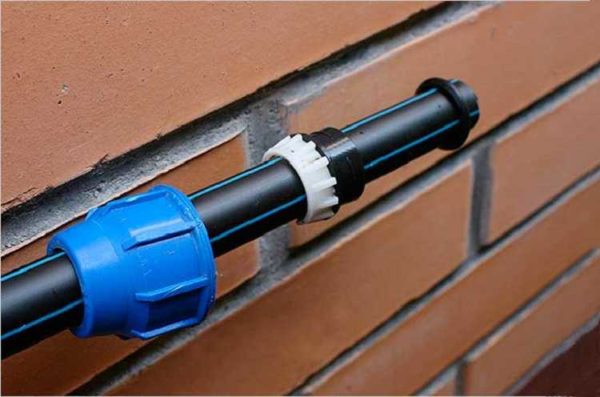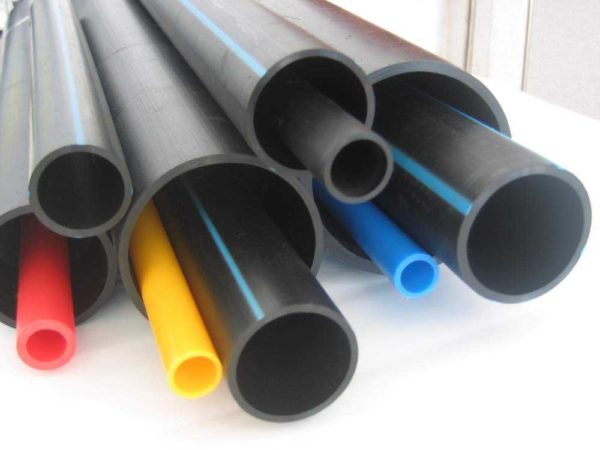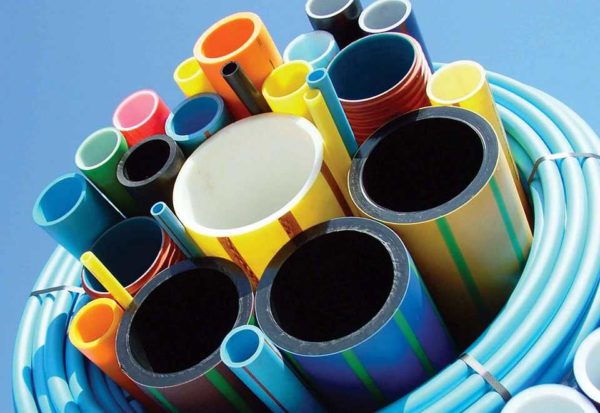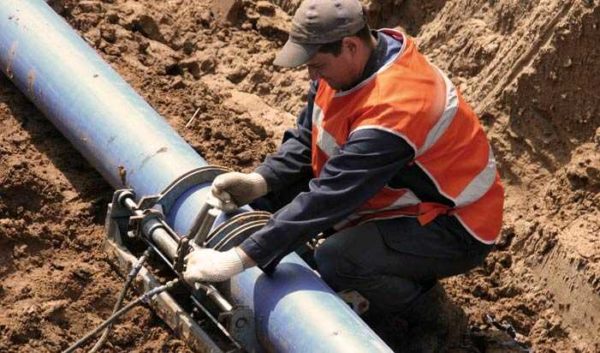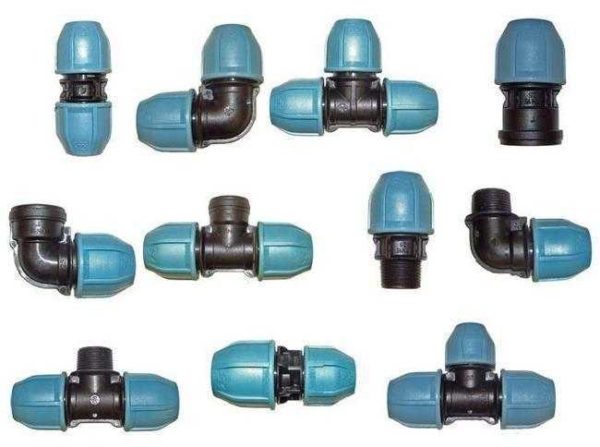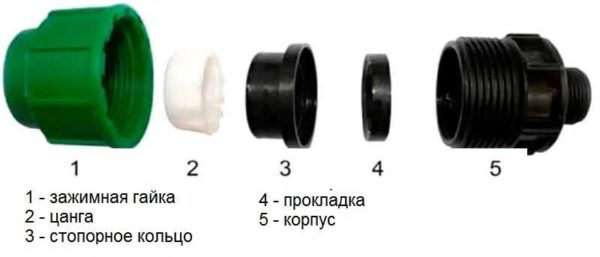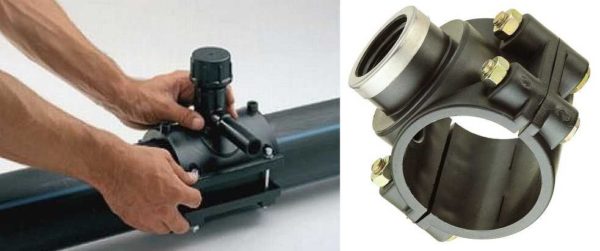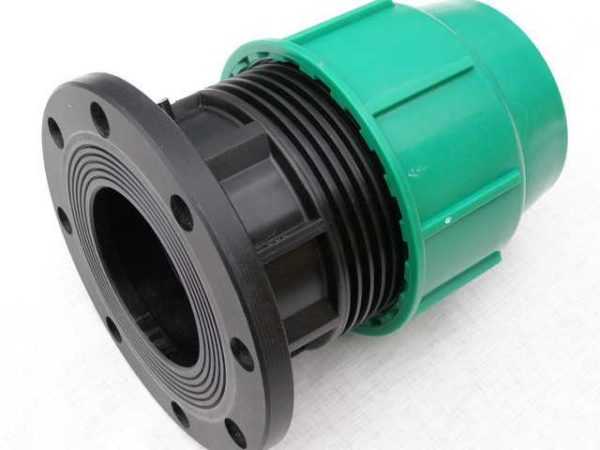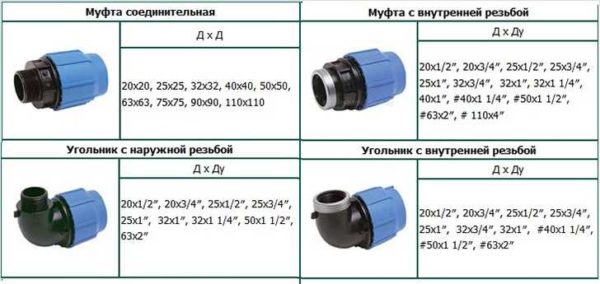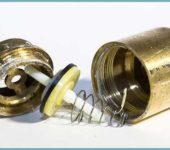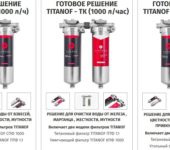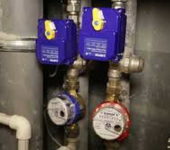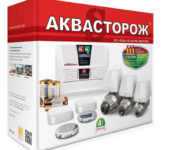How to connect polyethylene pipes
Modern plumbing is rarely made of metal. Worthy competitors have appeared for him - polymers, which are gradually replacing him in many areas. One of these materials is low pressure polyethylene. This material is used to make pipes for pressure pipelines, that is, for water pipes and even for gas pipelines. This type of material is becoming more and more popular, since the connection of polyethylene pipes is easy to do with your own hands. You just need to follow very simple rules.
The content of the article
Advantages and features of the application
Polyethylene pipes are made from low pressure polyethylene. This material is abbreviated as HDPE. It is distinguished by increased strength and elasticity, has good performance properties:
- chemically neutral, can be used for transporting food;
- smooth walls prevent plaque formation inside;
- not subject to corrosion;
- small coefficient of thermal expansion - about 3% at maximum heating (up to + 70 ° C);
- They normally react to freezing of water inside, due to elasticity they increase in diameter, and after thawing they take on their original dimensions.
One point to remember! If you need frost-resistant pipes (e.g. for water supply devices in the country), when choosing, look at the description or specifications. Not all types of copolymers that are used to make pipes are freeze-resistant. So be careful.
The main disadvantage of polyethylene pipes is restrictions on the temperature of the transported medium: it should not be higher than + 40 ° C, that is, only cold water supply can be made from HDPE, they cannot be used for hot water and, moreover, heating.
Another point: polyethylene does not tolerate UV radiation well. With constant exposure to the sun, the material loses its elasticity, and, after a while, breaks down (some manufacturers make HDPE pipes resistant to ultraviolet radiation, but they are more expensive). Therefore, an open laying of a water supply system from plastic pipes is very undesirable. But it is very possible to lay a pipe in a trench from a well or a well to a house, to make cold water distribution around the house. This is a fairly economical and convenient solution, since the installation and connection of polyethylene pipes is not very difficult. If we are talking about a detachable connection, then no equipment is needed for it. Only fittings and arms are needed.
Which polyethylene pipes are better
For the production of water pipes, polyethylene of two grades is used - PE 80 and PE 100. The hundredth polyethylene is denser and stronger than the eightieth. For water supply systems of a private house, the strength of PE 80 is more than enough - they can withstand pressure up to 8 atm. If you like a large margin of safety, you can take them from the PE100. They work normally even at 10 atm.
What you should pay attention to is the country in which this product is produced. Quality leaders are European manufacturers. High precision of execution guarantees high reliability of the system. Average quality and prices are for Turkish companies, in a cheaper price segment are Chinese manufacturers. Their quality, as usual, is also much lower. It is difficult to give advice here, everyone chooses at their own discretion (or what is in the region).
Types of HDPE pipe connections
There are several types of connection of polyethylene pipes:
- detachable (on fittings or couplings);
- one-piece - by welding:
- using a special welding machine;
- electric couplings - a heater is built into such couplings, when an electric current is applied to it, the polyethylene is heated and fused.
They mainly weld pipes of large diameters, which are used to create trunk pipelines. Small-diameter pipes - up to 110 mm, used in private construction, are mostly connected using fittings. Couplings are used more often during repair work, since their installation takes longer.
Fittings for polyethylene pipes are shaped parts (tees, crosses, angles, adapters, couplings), with the help of which the required system configuration is created. Since the independent connection of polyethylene pipes is carried out more often with the help of fittings, let's talk about them in more detail.
Assembly on compression (crimp) fittings
A whole system is installed on one or two sides of the fitting (sometimes on three), which ensures the connection. The fitting itself consists of:
- housing;
- clamping nut;
- collets - a plastic ring with an oblique cut, providing a tight coverage of the pipe;
- thrust ring;
- gasket, which is responsible for tightness.
How reliable is the connection
Despite the seeming unreliability, the connection of polyethylene pipes on compression fittings is reliable. Done correctly, it can withstand operating pressures up to 10 atm and higher (if these are products of a normal manufacturer). To prove it, watch the video.
This system is good for the ease of self-installation. You probably already appreciated this from the video. The pipe is simply inserted and the thread tightened.
Summer residents, except for the opportunity to do everything with their own lessons, she likes the fact that if necessary, everything can be disassembled, hidden for the winter, and reassembled in the spring. This is in case the layout is made for watering. The collapsible system is also good in that you can always tighten the underfloor fitting or replace it with a new one. The disadvantage - the fittings are bulky and the internal wiring in the house or apartment is rarely made of them - the appearance is not the most pleasant. But for the water supply section - from well to house - better material is difficult to find.
Assembly order
The pipe is cut strictly at 90 °. The cut should be even, without burrs. Also, the presence of dirt, oils or other contaminants is unacceptable. Before assembly, the chamfer is removed from the sections of the connected sections. This is to ensure that the sharp edge of the polyethylene does not damage the rubber sealing ring.
The spare parts are put on the prepared pipe in this order: the compression nut is pulled, then the collet, followed by the thrust ring. Install the rubber gasket into the fitting body. Now we connect the body and the pipe with the parts put on it, applying force - we must insert it all the way. We tighten all the parts to the body and connect with the crimp nut. We twist the resulting connection of polyethylene pipes with effort by hand. For reliability, you can tighten it with a special assembly key. The use of other tools for tightening is undesirable: you can damage the plastic.
Saddles and their scope
In addition to fittings, there is another interesting device that allows you to make branches from an already finished pipeline. These saddles are specially designed couplings. This coupling has one or more threaded holes. A tap is usually placed in them, and a new branch of the water supply is connected to it.
Zedeks are put on the pipe and fixed with screws.After that, a hole is drilled in the branch with a drill and a thick drill in the surface of the pipe. When it is ready, the crane is installed, the branch is going further. This is how the system is improved with minimal effort and expense.
Flange connections and transition to metal
In the water supply system elements can be installed that have not a threaded, but a flange connection. Usually these are taps or other shut-off or control valves. For connection with such elements, there is a special fitting for HDPE. On one side there is a standard compression version, on the other - a flanged version. Installation is standard with a crimp nut on one side, spacers and bolts on the flange side.
When installing a water supply system from polyethylene pipes, questions may also arise about the connection of polyethylene and metal. For these cases, fittings are used that have threads on one side. It can be external or internal, depending on the type of installed device or transition. Such fittings are straight, there are in the form of a 90 ° angle.
The installation is standard - a thread (with winding neatly) on one side and a crimp nut on the other.

